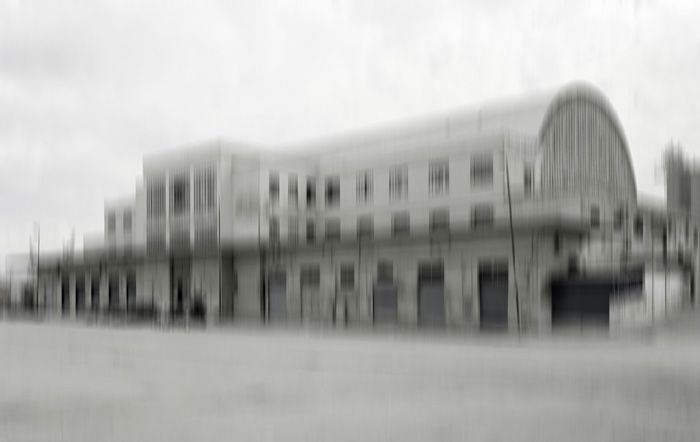Thomas Ruff
In search of the essential properties of photography, Thomas Ruff’s entire oeuvre is directed toward an analysis of the structure of images. Almost as if he were a scientist who proceeds through experiments, for every chosen theme, the artist creates several photographs, organizing them in series. The totality of the images that make up each series allows Ruff to compare and test the results he has achieved. The works in the collection of the Castello di Rivoli belong to three different series from the numerous ones the artist has produced to date.
02h 36m/-40°, 1990, is part of Sterne (Stars), 1989–92, a series that concentrates on images of the celestial vault. Passionate about astronomy since adolescence, the artist understood that his professional photographic equipment would not allow him to create satisfying images of the starry sky. He contacted the archives of ESO (European Southern Observatory), the European organization for astronomical research in the southern hemisphere and chose numerous photographs of stars taken from an astronomical observatory in Chile. He then sought the original negative for each image and selected one detail from which he printed a new photograph. As described by the title, 02h 36m/-40° is the precise representation of a corner of the universe, obtained using the most sophisticated scientific instruments available at the time of its realization. At the same time, the work is an abstract image, the stimulus for a voyage of the imagination toward an infinitely distant realm.
Interested in analyzing levels of removal from reality and the dependency of the contemporary imagination on the mass media, in recent years Ruff has used the Internet as a primary source. Substrat (Substratum), 2001-04, is one of the series that has emerged from this investigation. Similar to other works in the series, the piece in the collection, Substrat 16 I (Substratum 16 I), 2002, seems to depict the infinite chromatic mutations of an unstable substance, defined by sensual fields of vivid colors. However, the entire series stems from the appropriation of Japanese comic strips, chosen by Ruff on the Internet, because of their disconnection from the idea of realistic portrayal. Each photograph is obtained by superimposing, combining, and multiplying the initial images, through the manipulation of digital technology. Concealing the recognizability of the original forms, now reduced to pure visual stimuli, the process the artist employs alludes to the search for the deepest layer that underlies every image. The result includes the possibility of revealing the potential “nothingness” that is hidden behind many of them.
m.d.p.n.08, 2002, and m.d.p.n.33, 2003, belong to Ruff’s architectural photographs, which frequently appear among the artist’s work. In this case, the initial subject is the fish market in Naples, built by Luigi Cosenza between 1929 and 1934. An example of late Rationalism, the building lends itself to Ruff’s interpretation, and the two images in the collection represent the apparently opposite poles of the presumed possibilities of photography. While the photograph of the building interior relates to the documentary tradition, the one depicting the exterior stems from a complex digital manipulation.
[MB]





